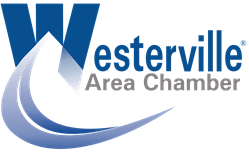Businesses don’t usually implode overnight. They fray at the edges first—through cash flow missteps, lagging systems, or half-visible inefficiencies that gain ground in the margins. Often, the signs were there all along. The problem is that most people don’t look until they’re forced to. What follows is a roadmap for identifying and improving those financial and operational gaps before they widen into something unfixable.
Pay Attention to the Patterns You're Ignoring
Some of the clearest signs of weakness aren’t hidden at all—they’re just overlooked. When invoices consistently go unpaid for weeks, or customer complaints sound eerily similar, that’s not noise; that’s a warning. It’s easy to brush off recurring issues as isolated, but they rarely are. Spotting patterns, especially those that make you uncomfortable, is the first step to getting ahead of deeper operational failures.
Your Margins Tell a Story—Learn to Listen
Healthy profit margins aren’t just a sign of success—they’re a pressure gauge. When margins shrink quietly over time, it’s often an indication of bloated expenses, ineffective pricing, or production inefficiencies. But too many businesses don’t review their margins with enough scrutiny. Regularly breaking down profitability by product, service line, or client segment can help reveal where costs are creeping in without delivering value in return.
Rework the Way Financial Documents Flow
A document management system doesn’t just keep files tidy—it builds a foundation for smarter financial oversight. Centralizing invoices, statements, and payroll records reduces time spent hunting down data and makes compliance much easier. One of the most overlooked advantages is the importance of exporting PDF to Excel, since converting static files into spreadsheets allows for easy manipulation and analysis of tabular data, providing a more versatile and editable format. Once edits are complete, the file can be resaved as a PDF, preserving a polished, shareable version for records or reporting.
Audit the Tools, Not Just the People
There’s a tendency to zero in on staff performance when problems arise, but software, processes, and tools are just as often to blame. Outdated platforms, manual workflows, or disconnected systems can quietly drain hours from your week. A periodic operational audit—especially one that includes conversations with frontline employees—can reveal time-wasters that upper management rarely sees. Efficiency doesn't just come from working harder; it comes from working smarter.
Don’t Mistake Revenue for Health
Chasing top-line growth while ignoring underlying structural issues is like painting over water damage. Revenue may increase, but if cash flow continues to stumble or debt piles up, the business isn’t thriving—it’s surviving on borrowed time. A solid grasp on working capital, fixed vs. variable costs, and financing obligations gives a clearer picture of the company’s actual health. Without that, growth can become its own form of risk.
Feedback Isn't Fluff—It’s a Diagnostic Tool
Surveys, complaints, staff reviews, even offhand comments in meetings—they’re all data points. Businesses that create space for honest, unfiltered feedback often catch problems early. And it’s not just about customers. Employees who handle the day-to-day operations are usually the first to spot inefficiencies or repeated friction points. Ignoring that feedback, or collecting it without acting on it, is a missed opportunity to course-correct before things break.
Watch the Handoff Points
Weaknesses often live in the spaces between departments—where sales hands off to operations, or where support relays a technical issue to development. These transition zones are where delays, errors, and confusion tend to cluster. Mapping out those junctions, clarifying responsibilities, and aligning goals across teams helps eliminate costly breakdowns. The smoother the handoff, the less friction across the entire workflow.
Stop Doing Things That Don’t Work Anymore
One of the hardest truths in business is this: what got you here might not take you further. Processes, offerings, and even cultural habits that once felt essential can become liabilities over time. Clinging to the familiar for the sake of comfort often prevents real growth. Making a clean break from outdated practices requires clear thinking and tough conversations—but it also opens the door to something more sustainable.
There’s no single dashboard or magic KPI that will save a company from its own blind spots. Improving operational and financial weak points takes time, curiosity, and a willingness to rethink what’s assumed. It comes from small, persistent corrections: trimming the right costs, upgrading what’s outdated, listening more intently. Strength isn’t built by covering flaws with polish—it’s built by going into the cracks and fixing what’s real. The best businesses don’t just run—they evolve. The trick is knowing where to look.
Discover the vibrant community and business opportunities with the Westerville Area Chamber of Commerce. Join us to enhance your network and be part of Westerville’s economic and cultural growth!

